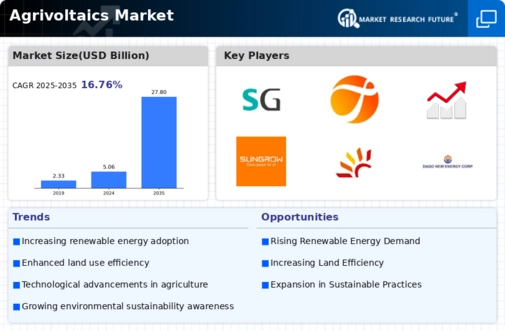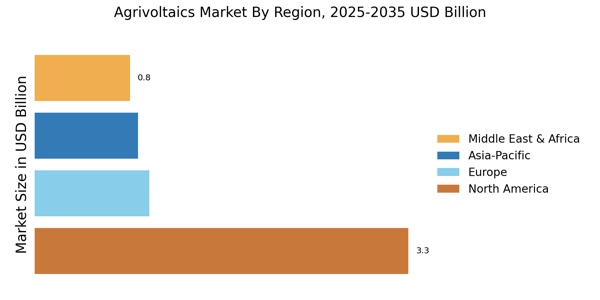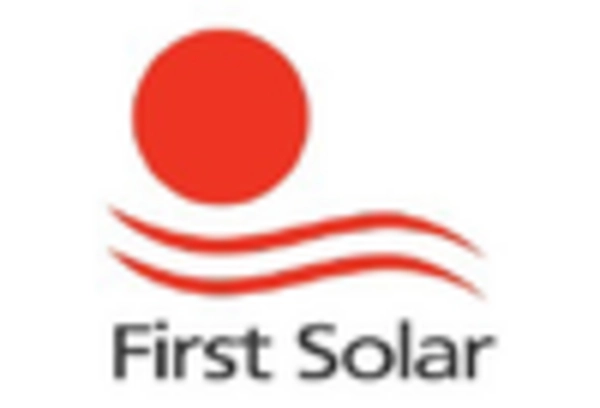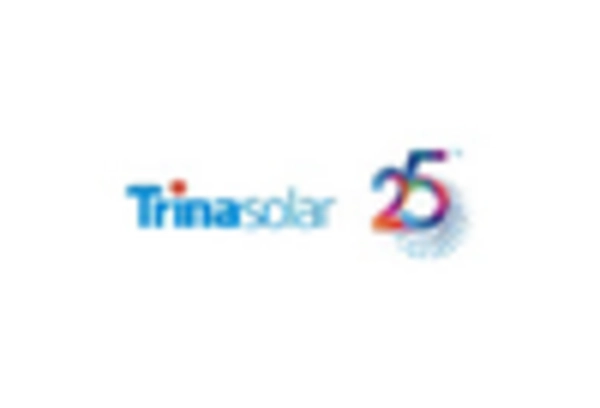Regulatory Framework and Support
The Agrivoltaics Market benefits significantly from supportive regulatory frameworks and government incentives aimed at promoting renewable energy and sustainable agricultural practices. Various countries have implemented policies that encourage the integration of solar energy systems into farming operations, providing financial incentives such as tax credits and grants. For instance, recent reports suggest that regions with favorable policies have seen a 30% increase in agrivoltaic installations. This regulatory support not only fosters investment in the Agrivoltaics Market but also encourages farmers to adopt these systems, thereby enhancing their economic viability and sustainability.
Climate Change Mitigation Efforts
The urgent need for climate change mitigation is influencing the Agrivoltaics Market as stakeholders seek solutions that address both energy production and food security. Agrivoltaics Market systems can potentially reduce greenhouse gas emissions by allowing for the simultaneous generation of renewable energy and food production. As nations commit to reducing their carbon footprints, the integration of solar energy into agricultural practices is becoming increasingly attractive. Recent studies suggest that implementing agrivoltaic systems could lead to a reduction of up to 50% in emissions from traditional farming methods, thereby positioning the Agrivoltaics Market as a key player in climate action strategies.
Economic Viability and Cost Reduction
The economic viability of agrivoltaic systems is becoming more apparent, contributing to the growth of the Agrivoltaics Market. As the costs of solar technology continue to decline, the initial investment required for agrivoltaic installations is becoming more accessible for farmers. Recent data indicates that the cost of solar panels has decreased by nearly 40% over the last five years, making it a more attractive option for agricultural producers. This trend suggests that as financial barriers diminish, more farmers may consider integrating solar energy solutions into their operations, thereby expanding the Agrivoltaics Market and enhancing overall agricultural productivity.
Rising Demand for Sustainable Practices
There is a growing demand for sustainable agricultural practices, which is driving the Agrivoltaics Market forward. Consumers are increasingly aware of the environmental impacts of traditional farming and are seeking products that are produced using eco-friendly methods. This shift in consumer behavior is prompting farmers to explore agrivoltaic systems as a means to reduce their environmental footprint while maintaining productivity. Market analysis indicates that the demand for sustainably produced food is expected to grow by 25% in the coming years, which could significantly boost the Agrivoltaics Market as more farmers adopt these innovative practices.
Technological Innovations in Agrivoltaics
The Agrivoltaics Market is experiencing a surge in technological innovations that enhance the efficiency of solar energy production while simultaneously supporting agricultural activities. Advanced photovoltaic systems, such as bifacial solar panels, are being integrated into farming practices, allowing for dual land use. This innovation not only maximizes land productivity but also reduces the overall carbon footprint of agricultural operations. Recent data indicates that the efficiency of solar panels has improved by approximately 20% over the past few years, which could lead to increased adoption rates among farmers. As technology continues to evolve, the Agrivoltaics Market is likely to witness further advancements that could revolutionize how energy and food are produced.


















Leave a Comment